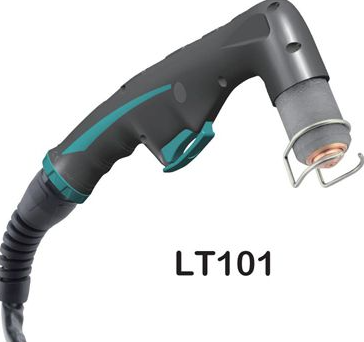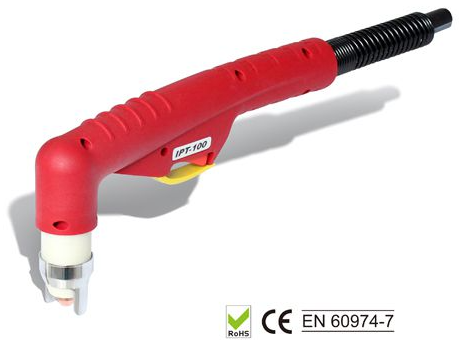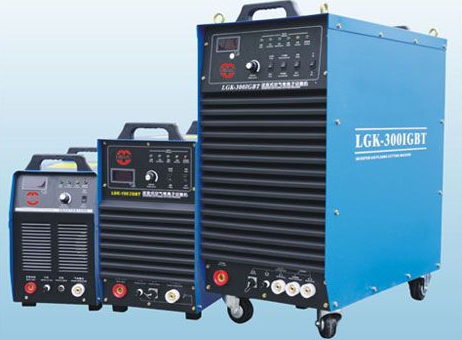Plasma cutting is a widely used technique for cutting various metals, renowned for its speed, precision, and versatility. If you’re considering plasma cutting for your industrial or DIY projects, you might have some questions. Here are some frequently asked questions about plasma cutting:
1. What is Plasma Cutting?
Plasma cutting is a process that uses a high-velocity jet of ionized gas (plasma) to cut through electrically conductive materials. The plasma jet is created by forcing gas (such as air, oxygen, or nitrogen) through a nozzle at high speed while an electrical arc is formed through that gas, turning it into plasma. This plasma is hot enough to melt the metal, and the high-velocity gas blows the molten metal away, creating a clean cut.
2. What Materials Can Be Cut with Plasma?
Plasma cutting can be used on any conductive metal. Common materials include:
Mild steel
Stainless steel
Aluminum
Brass
Copper
Other conductive metals

Plasma Cutting Torch
3. What Are the Advantages of Plasma Cutting?
Plasma cutting offers several advantages:
Speed: Plasma cutting is faster than traditional cutting methods, particularly for thinner metals.
Precision: It produces clean, precise cuts with minimal kerf (width of the cut).
Versatility: It can cut a variety of metals and thicknesses.
Ease of Use: Modern plasma cutters are user-friendly and require minimal setup.
Cost-Effective: It is economical for both small-scale and large-scale operations.
4. What Are the Limitations of Plasma Cutting?
While plasma cutting is versatile, it has some limitations:
Material Thickness: There is a practical limit to the thickness of material that can be cut effectively. For extremely thick metals, other methods like oxy-fuel cutting might be more suitable.
Conductive Materials Only: It can only cut materials that conduct electricity.
Heat-Affected Zone (HAZ): Plasma cutting generates heat, which can affect the material properties near the cut edge.

Plasma Cutting Torch
5. How Thick Can a Plasma Cutter Cut?
The cutting thickness depends on the power of the plasma cutter. Here are general guidelines:
Low-Power Units: Typically cut up to 1/4 inch (6 mm) thick metal.
Medium-Power Units: Can cut metals up to 1 inch (25 mm) thick.
High-Power Units: Industrial units can cut metals over 1 inch (25 mm) thick, with some capable of cutting up to 3 inches (75 mm) or more.
6. What Gas Is Used in Plasma Cutting?
Various gases can be used in plasma cutting, each with its benefits:
Air: Common and cost-effective, suitable for cutting mild steel, aluminum, and stainless steel.
Oxygen: Provides a faster cut and better quality on mild steel.
Nitrogen: Good for cutting stainless steel and aluminum, as it prevents oxidation.
Argon-Hydrogen Mixtures: Used for cutting thick stainless steel and aluminum.
7. Is Plasma Cutting Safe?
Plasma cutting is generally safe when proper safety measures are followed:
Personal Protective Equipment (PPE): Wear safety goggles, gloves, and flame-resistant clothing.
Ventilation: Ensure good ventilation to avoid inhaling fumes and gases.
Training: Operators should be trained in the safe use of plasma cutting equipment.
Fire Precautions: Keep flammable materials away from the cutting area and have fire suppression equipment ready.

Plasma Cutting Machine
8. How Does Plasma Cutting Compare to Other Cutting Methods?
Versus Oxy-Fuel Cutting: Plasma cutting is faster and can cut a wider range of metals. Oxy-fuel is better for thicker metals and is typically more portable for fieldwork.
Versus Laser Cutting: Laser cutting offers higher precision and is better for intricate cuts and non-conductive materials. However, plasma cutting is more cost-effective for thicker and less detailed cuts.
Versus Waterjet Cutting: Waterjet cutting can cut almost any material without heat-affected zones but is slower and more expensive than plasma cutting.
9. What Maintenance Is Required for a Plasma Cutter?
Regular maintenance ensures optimal performance and longevity of a plasma cutter:
Inspect Consumables: Regularly check and replace nozzles, electrodes, and other consumables.
Clean Torch: Keep the torch clean and free from debris.
Check Connections: Ensure all electrical and gas connections are secure.
Monitor Air Supply: Use clean, dry air to prevent contamination and damage to the torch and consumables.
10. How Do I Choose the Right Plasma Cutter?
Consider the following factors when choosing a plasma cutter:
Material Thickness: Ensure the cutter can handle the maximum thickness you plan to cut.
Cutting Speed: Higher power units cut faster, saving time on large projects.
Portability: Choose a model that fits your workspace and mobility needs.
Budget: Balance the cost with the features and performance you need.
Brand and Support: Opt for reputable brands that offer good customer support and warranty.
By understanding these key aspects of plasma cutting, you can make an informed decision and effectively utilize plasma cutting technology in your projects.
Do you want to receive more information about Plasma cutting? Then we are happy to answer your questions. Fill in the contact form or send an email to https://www.sino-welding.com.








